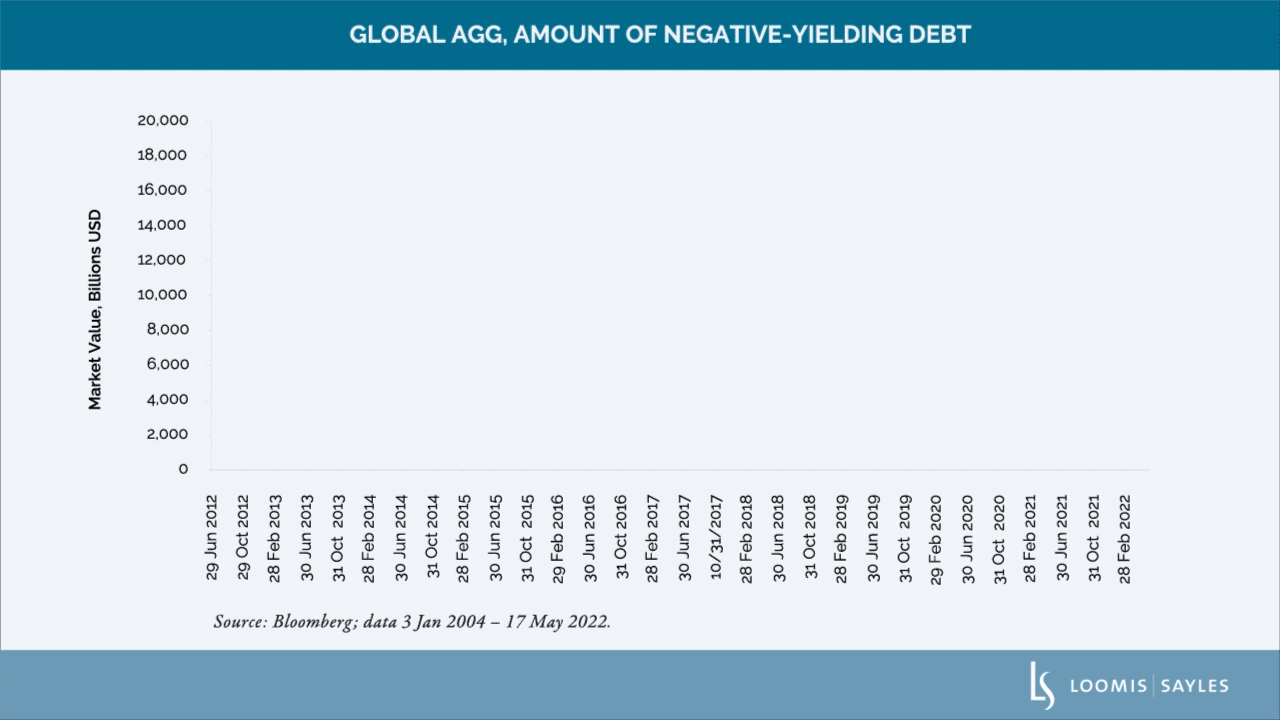In early 2021, the global stock of negative-yielding debt reached about $16 trillion. Central banks in Europe and Japan had implemented negative policy rates to weaken their currencies—an important policy lever when facing global disinflationary pressures.
It’s a different world now...
- Globally, a historic shift in central bank policy is currently underway. Central banks are moving away from actively using their balance sheets as a monetary policy tool.
- The implications of this change are likely to be varied and in some instances substantial, as evidenced in the chart below. It shows the amount of negative-yielding debt outstanding has declined sharply from 2020 highs. In Europe, the ECB is now taking steps to ensure consistent transmission of monetary policy across the currency union as opposed to the broad portfolio balance strategy it implemented to combat deflationary concerns.
- In assessing additional potential outcomes, one seems probable—uncertainty about future inflation rates, fund flows and central bank reaction functions.
Read our recently published paper, Life After QE, to gain a deeper insight into what the potential implications could portend for investors.


MALR029146
Market conditions are extremely fluid and change frequently.
This blog post is provided for informational purposes only and should not be construed as investment advice. Any opinions or forecasts contained herein reflect the
subjective judgments and assumptions of the authors only and do not necessarily reflect the views of Loomis, Sayles & Company, L.P. Information, including
that obtained from outside sources, is believed to be correct, but Loomis Sayles cannot guarantee its accuracy. This material cannot be copied, reproduced or
redistributed without authorization. This information is subject to change at any time without notice.





